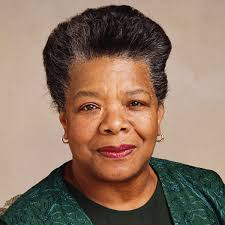
WHY LAKUNLE LOSE SIDI TO BAROKA
The play is about conflict between tradition and modernity. Payment of bride price is strictly attached to traditional marriage. Lakunle refuses to pay the traditional bride price for Sidi, losing her to Baroka.
Lakunle is a ‘half-baked’ educated young village teacher who places western values above traditional customs, including the payment of bride price. Sidi is the village beauty. She is simple, naive and has an overblown image of herself. She is the ‘jewel’ of liujinle. She represents African traditional values. Baroka is the traditional ruler of Ilujinle and is 62 years. He upholds customs and employs wit and cunning to lure Sidi to join his many wives. He is the Lion of Iujinle. Sadiku is the oldest wife of Baroka whom he inherited from the late chief, Okiki. She is simple-minded and used by Baroka to find other women to be his wives.
Lakunle approach Sidi in the morning where he criticizes Sidi’s traditional background. He sees Sidi as ignorant, uneducated and uncultured. He condemns bride price as primitive and barbaric. However, he promises Sidi a good civilized life after marriage.
Baroka approach Sidi in the noon through Sadiku. Baroka sends Sadiku to Sidi with his proposal. Sadiku promises Sidi wealth, honour and prestige if married to Baroka. She praises Sidi's beauty, and invites her to supper with Baroka at the palace which Sidi refuses.
Baroka wins Sidi’s love as he re-strategizes; he shares the secret of his impotence with Sadiku. Sadiku breaks the secret to Sidi. Sidi goes to mock Baroka at his palace. Sidi is lured to bed , but discovered the shocking truth to her amazement; Baroka is not impotent.
Sidi snobs Lakunle for Baroka after she returns to the company of Lakunle and Sadiku in agony, devastated and speechless. She later breaks the news that the ‘lion’ has broken her virginity. Lakunle now promises to marry Sidi without the payment of bride price. Sidi disappears, but returns dressed and prepared for marriage to Baroka, to the chagrin of Lakunle. Lakunle relies on Western ideas and values; yet he is immature in the race for Sidi and loses her love and her hand in marriage. Baroka employs traditional wit and skill (backed by deception) to win Sidi’s love in the end.
THE THEME OF LOVE AND MARRIAGE IN THE PLAY
The play is about conflict between tradition and modernity as manifested in courtship and marriage. Lakunle refuses to pay the traditional bride price for Sidi, losing her to Baroka. Baroka is the Bale of Ilujinle. He epitomizes traditional love and marriage which is polygamous and based on the payment of bride price. Lakunle is a young half educated village school! teacher who places western values above traditional custom. Based on courtship and non-payment of the bride price as epitomized by Lakunle who is more of a caricature. Lakunle represents love in the modern sense - non-payment of bride price and complete abandonment of tradition and customs related to love and marriage. Tradition represented by sidi and Baroka, will not accept anything less than the payment of the bride price. Lakunle's verbosity exposes his lack of firm foundation: "A savage custom, barbaric. outdated/rejected, denounced, accused excommunicated....’ Sidi describes Lakunle’s bombastic words as mere persuasion. Lakunle describes love and marriage as a savage custom, barbaric. outdated....excommunicated’. His attempts to kiss Sidi are rebuffed as untraditional, inspite of his entreatics. he does not succeed in winning Sidi over.
Regardless of Baroka’s seduction of Sidi through pretence of his impotence after being aided by sadiku, he marries her, according to custom, Lakunle's failure to win Sidi proves that traditional love and marriage is based not on words but on compliance with the traditional requirements. The marriage between Baroka and Sidi symbolizes He continuation of the African social order which has been ‘threatened’ by the mockery of western values in the play.



















